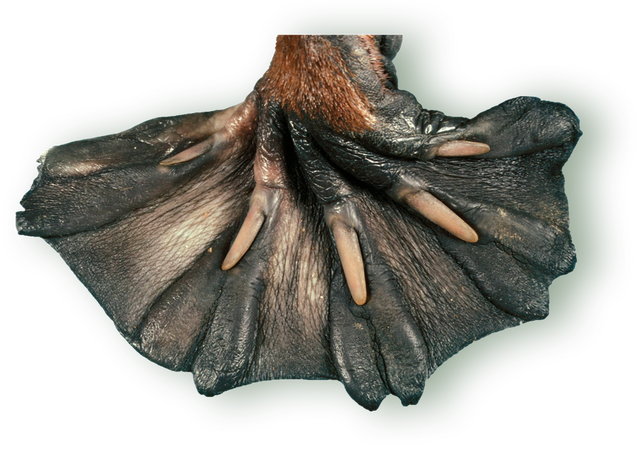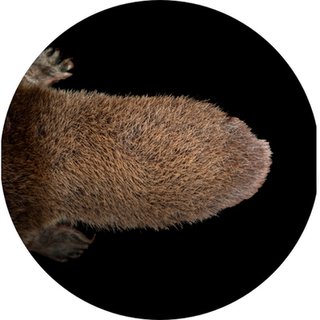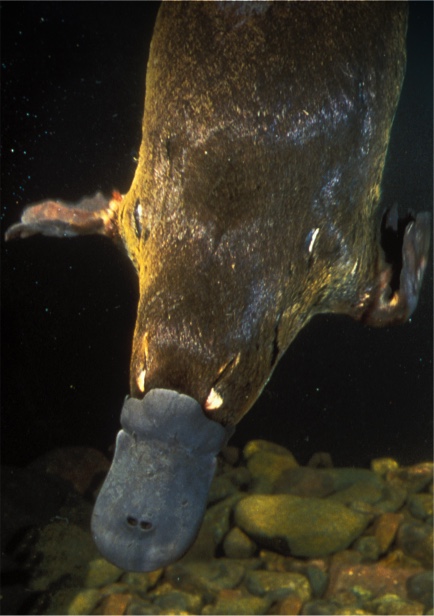InWater,OnLand
Aplatypusisbuiltforbothlandandwater.Itsfrontfeetarewebbed.Whenitspreadsitstoes,itsfootbecomesapaddle.Itpaddlesthroughthewater.Whenitswims,itsbackfeethelpitsteerand brake.
Theplatypusmayfeelmostathomeinthe water.
Thisplatypus'sbigwebbedfeethelppropelitthroughthe water.
Theplatypus’sfeethelpitonland and in water.

front foot
Onland,itcanuseitsfrontclawstodig.Itsbackfeethelpitclimbonland.Maleplatypuseshavehollowspikesintheirbackfeet.Theyarefilledwithavenom.Theplatypusesusethesewhentheyfightother platypuses.


Maleplatypuseshavespikesontheirback heels.

Theplatypus’stailhelpsitswim.Italsostores fat.
TailandEyes
Doyouknowwhattheplatypus’stailisfor?It’sastoragetank!Itholdsbodyfat.Thisfatgetsusedupwhenfoodis scarce.
Onland,aplatypususesitseyestospotpredators.Inwater,itclosesitseyestightlytokeepthewaterout.Howdoesithunt?Itusesitsothersensestofind prey.
Itmayseemliketheplatypushassomeoddparts.But,thismishmashmammalisasurvivalsuccess story!

Lighterfuronitseyelidsmakethisplatypus’seyesseemtoglowwhenclosed underwater.
